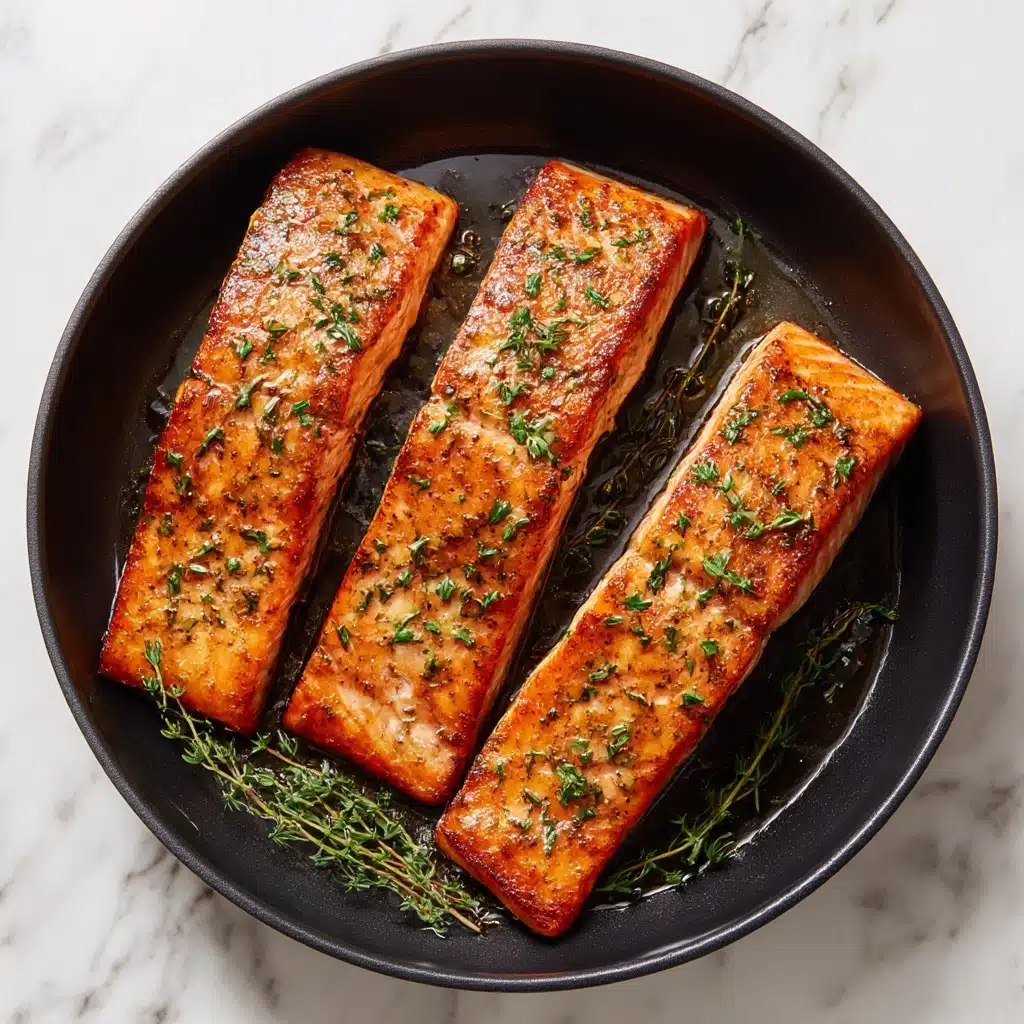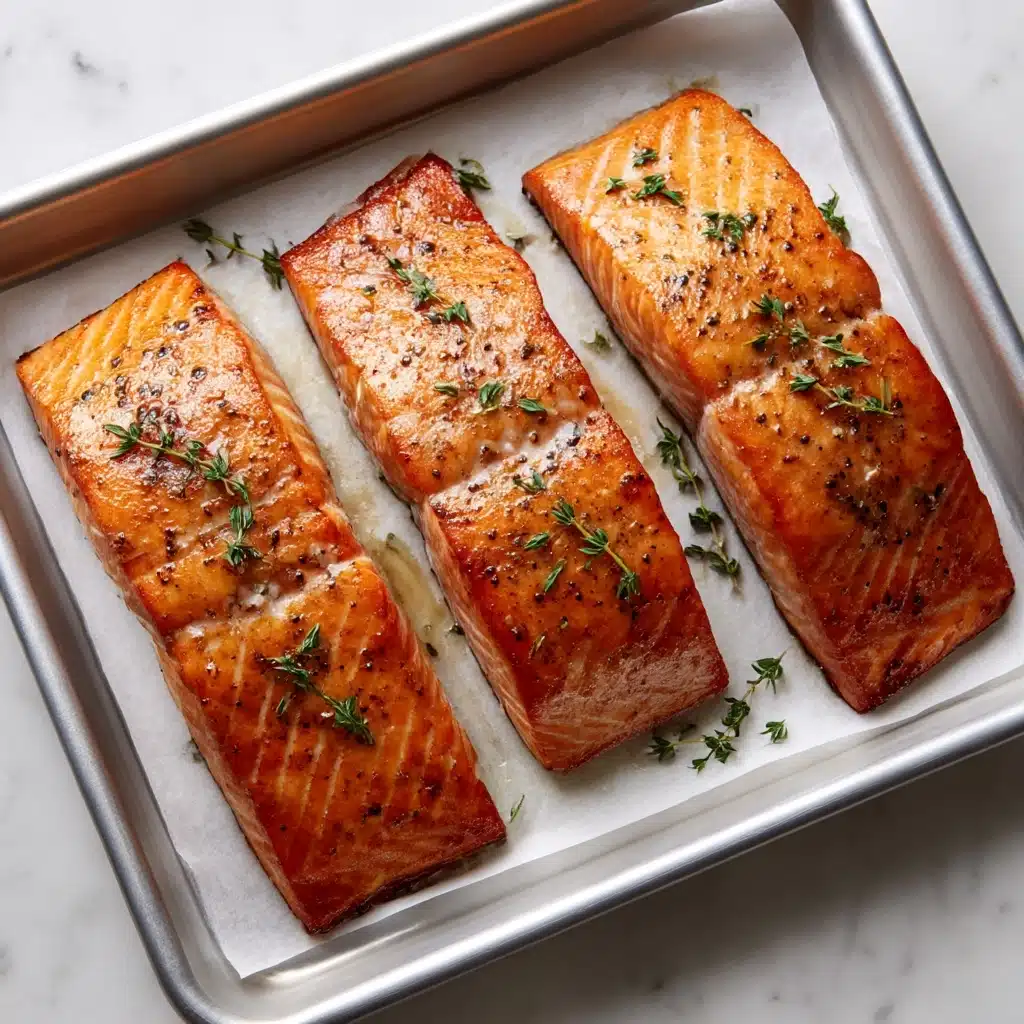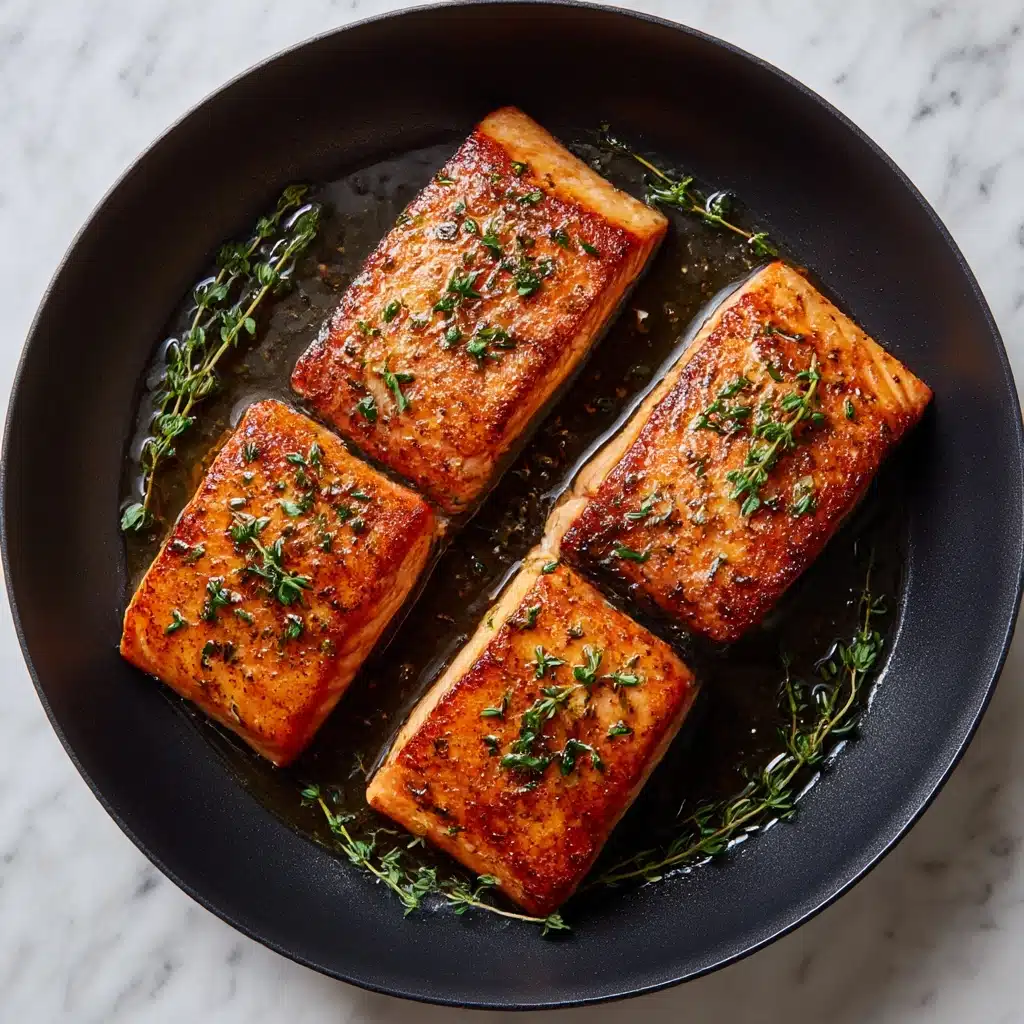If you’ve ever wondered how to cook salmon for a juicy, flavorful, and restaurant-quality meal, you’re in the right place! Salmon is one of those fish that’s both versatile and elegant, and you’ll be amazed at how easy it is to whip up a perfect fillet with minimal ingredients and a handful of simple techniques. In this guide, we’re diving into three foolproof ways to prepare mouthwatering salmon, with plenty of tips and serving ideas to make every bite truly memorable.
Ingredients You’ll Need
Let’s keep things delightfully simple! Each ingredient in this recipe plays a vital role—some provide a pop of fresh flavor, others create a golden crust, and a few cozy companions bring out the best in salmon’s buttery texture and gorgeous color.
- Salmon Fillets (4, about 6 oz each): The star of the show—choose fresh, vibrant pink fillets, skin-on for extra crispiness or skinless if you prefer lighter bites.
- Olive Oil or Melted Butter (2 tbsp): Adds luscious moisture and helps the seasonings adhere, while creating a subtly rich finish.
- Lemon (zested and sliced into wedges): Lemon zest brightens the whole dish, while wedges are perfect for squeezing over your finished salmon.
- Garlic, minced (2 cloves, optional): For a savory kick, minced garlic brings warmth and depth to the flavor profile.
- Salt and Black Pepper, to taste: Classic seasonings that bring out all the natural goodness in your salmon.
- Fresh Herbs (dill, parsley, or thyme, optional): A sprinkle of herbs adds vibrant color and a layer of fresh aroma to the final plate.
How to Make How to Cook Salmon
Step 1: Prep Your Salmon and Pan
Start by preheating your oven or air fryer, or getting your skillet ready. Pat your salmon fillets dry with a paper towel—this is essential for a crispy crust and even flavor. Line a baking sheet with parchment paper or foil if you’re going the oven route, and set out your ingredients so everything’s within reach for a seamless experience.
Step 2: Season Every Fillet
Brush each salmon fillet generously with olive oil or melted butter. Sprinkle with salt, freshly cracked black pepper, and a dusting of lemon zest. If you’re a garlic lover, massage that minced garlic over the top for an extra punch. Each fillet should look glossy and vibrant, ready for the next step!
Step 3: Oven-Baked Perfection
To bake, arrange your seasoned salmon fillets skin-side down on the prepared baking sheet. Slide into your preheated oven at 400°F (200°C). Bake for 12–15 minutes—the edges will darken slightly, the center will still be tender, and the salmon will flake apart when prodded with a fork. Don’t forget to finish with lemon wedges and sprinkle on fresh herbs for that final flourish!
Step 4: Pan-Seared Method
Craving crispy skin? Heat olive oil in a skillet over medium-high. Tuck your fillets in, skin-side down, and let them sizzle undisturbed for 4–5 minutes until you see golden, crunchy perfection. Flip gently and cook another 2–4 minutes—the flesh turns opaque and oh-so-moist. Finish with a generous squeeze of lemon juice right in the pan to capture all those aromatic juices.
Step 5: Air Fryer Ease
If you want speed without sacrificing texture, preheat your air fryer to 400°F (200°C). Lightly oil and season each fillet, arrange them in a single layer in the basket, and cook for 8–10 minutes. The air fryer works wonders for even cooking and a beautiful, slightly crisp exterior—no flipping required! Serve immediately for best results.
How to Serve How to Cook Salmon

Garnishes
For that satisfying restaurant finish, sprinkle your salmon fillets with a handful of fresh dill, parsley, or thyme. A few turns of cracked black pepper, a flourish of lemon zest, and those all-important lemon wedges on the side make for a plate that looks as good as it tastes. Don’t be shy with the fresh herbs—they add aroma, color, and a layer of garden-fresh flavor that takes things up a notch!
Side Dishes
How to cook salmon isn’t just about the fish—think of the sides as your supporting cast. Roasted vegetable medleys, garlic mashed potatoes, or a simple rice pilaf are failsafe crowd-pleasers. For lighter cravings, serve alongside a crisp green salad or fluffy quinoa. The mild richness of salmon makes it the ultimate match for so many styles!
Creative Ways to Present
Impress your guests (or just treat yourself!) by arranging the fillets over vibrant salads, tucking them into warm grain bowls, or even flaking the cooked salmon into tacos with tangy slaw. Don’t be afraid to play with sauces—try a quick yogurt-dill drizzle or spicy sriracha mayo for something bold and new. How to cook salmon becomes even more fun when creative plating is part of the experience!
Make Ahead and Storage
Storing Leftovers
If you have leftover salmon, store the cooled fillets in an airtight container in the refrigerator within two hours of cooking. They’ll taste fresh for up to 2 days, making lunch or dinner the next day a breeze. Cold salmon is fantastic atop salads or tucked into wraps!
Freezing
To freeze your cooked salmon, let it cool completely, then wrap each fillet tightly in plastic wrap or foil before placing in a zip-top bag. It will keep well for up to 2 months. Thaw overnight in the fridge before reheating or enjoying chilled.
Reheating
To gently reheat salmon and maintain its moisture, place the fillets on a baking sheet, cover loosely with foil, and warm in a 275°F (135°C) oven for about 10–12 minutes. Avoid microwaving, which can make the texture rubbery. A fresh squeeze of lemon and sprinkle of fresh herbs will help revive the flavor!
FAQs
How do I know when salmon is fully cooked?
Salmon is perfectly cooked when it flakes easily with a fork and reaches an internal temperature of 135–145°F (57–63°C). The flesh will appear opaque and moist rather than translucent. If you’re unsure, seek the thickest part—it should yield under gentle pressure.
Can I use frozen salmon for this recipe?
Absolutely! Just make sure to thoroughly thaw your salmon overnight in the refrigerator or under gently running cold water. Pat dry before seasoning to ensure you get the best texture when following how to cook salmon using any method.
What’s the best way to get crispy skin?
For irresistible crispy skin, the pan-seared method is your best bet. Start with dry fillets, heat your skillet until sizzling hot, and don’t move the salmon while it cooks skin-side down. Patience pays off for that golden crunch!
Is it better to use butter or olive oil?
Both butter and olive oil bring wonderful flavors, but butter creates a slightly richer, more decadent finish, while olive oil keeps things light and heart-healthy. You can even use both for the ultimate blend!
What herbs go best with how to cook salmon?
Dill, parsley, and thyme are classic choices that pair beautifully with salmon’s mellow flavor. You can also try chives or tarragon for a twist, or mix a medley for a fresh, herbal bouquet in every bite.
Final Thoughts
If you’re on the hunt for an easy, impressive main dish, give how to cook salmon a try. With just a handful of ingredients and three super straightforward cooking methods, you’ll serve up something that looks beautiful and tastes even better. Whether you’re planning a cozy weeknight dinner or a fancy get-together, this salmon recipe is bound to steal the show—so grab your fillets and get cooking!
Print
How to Cook Salmon Recipe
- Prep Time: 5 minutes
- Cook Time: 10–15 minutes
- Total Time: 20 minutes
- Yield: 4 servings
- Category: Main Course
- Method: Baking, Pan-Searing, Air Frying
- Cuisine: American
- Diet: Non-Vegetarian
Description
Learn how to cook delicious salmon three ways: oven-baked, pan-seared, and air-fried. Each method yields perfectly cooked, flavorful salmon fillets that are easy to prepare and versatile for any meal.
Ingredients
Oven-Baked Salmon:
- 4 salmon fillets (about 6 oz each), skin-on or skinless
- 2 tbsp olive oil or melted butter
- 1 lemon (zested and sliced into wedges)
- 2 cloves garlic, minced (optional)
- Salt and black pepper, to taste
- Optional: fresh herbs like dill, parsley, or thyme
Pan-Seared Salmon:
- 4 salmon fillets (about 6 oz each), skin-on or skinless
- 2 tbsp olive oil or melted butter
- Salt and black pepper, to taste
- Optional: lemon juice for finishing
Air Fryer Salmon:
- 4 salmon fillets (about 6 oz each), skin-on or skinless
- 2 tbsp olive oil or melted butter
- Salt and black pepper, to taste
Instructions
- Oven-Baked Salmon: Preheat oven to 400°F (200°C). Line a baking sheet with parchment paper or foil. Pat salmon dry with paper towels. Rub each fillet with olive oil or butter. Season with salt, pepper, garlic (if using), and lemon zest. Place fillets skin-side down on the baking sheet. Bake for 12–15 minutes, or until the salmon flakes easily with a fork. Serve with lemon wedges and sprinkle with fresh herbs.
- Pan-Seared Salmon: Heat 1–2 tbsp olive oil in a skillet over medium-high heat. Season salmon with salt and pepper. Place fillets skin-side down in the pan and cook for 4–5 minutes, until the skin is crispy. Flip and cook another 2–4 minutes, until opaque and cooked through. Remove from heat and finish with a squeeze of lemon juice.
- Air Fryer Salmon: Preheat air fryer to 400°F (200°C). Lightly oil and season salmon fillets. Place in the air fryer basket and cook for 8–10 minutes, depending on thickness. No flipping required—serve immediately.
Notes
- Salmon is done when it reaches 135–145°F (57–63°C) internally and flakes easily.
- If using frozen salmon, thaw overnight in the fridge or under cold running water before cooking.
- Pairs well with roasted veggies, rice, or salad.


